F1 Manager 2023 is out now across PC, PlayStation 4, PlayStation 5, Xbox One and Xbox Series X|S, with Frontier Developments’ sophomore entry in its F1 Manager series building on the solid foundations of last year’s F1 Manager 2022.
Although much of the gameplay will be familiar to ‘22 players, ‘23 offers up a few new interesting features that warrant a slightly different approach to a race weekend.
So, if you want to be more Christian Horner than Otmar Szafnauer check out our top F1 Manager 2023 tips and tricks below.
Driver confidence
Driver confidence is a new game mechanic for F1 Manager 2023, where a driver’s race preparations contribute to an overall confidence figure that affects their race day performance.
Below, we’ve outlined a few key areas you need to look at to improve driver confidence and ensure your team nails the best possible result.

1) Track acclimatisation
This is a simple stat to influence; simply instruct your driver to run as many laps as possible to enhance their track knowledge. Longer runs increase this stat quicker, so get your set-up sorted as quickly as possible before getting out on track for a whole practice session.
Which gently leads us onto…
2) Set-up satisfaction
Achieving an optimal set-up is key to boosting your drivers’ confidence. F1 Manager 2023 borrows ‘22’s simple set-up minigame wholesale, with five aspects of car set-up (front wing angle, rear wing angle, anti-roll bar distribution, tyre camber and toe-out) affecting five areas of driver feedback (oversteer, braking stability, cornering, traction and straight-line performance).
Altering each set-up slider affects how close to the optimal zone of driver set-up satisfaction you can get, with practice laps helping narrow down the range you need to aim for.
Set-up tweaks greatly affect specific areas of driver confidence; so, for example, rear wing angle has the greatest effect on straight-line speed, while anti-roll bar changes drastically affect traction (the rest are shown below).

F1 Manager 2023 set-up guide
- Front Wing Angle: changes Oversteer
- Rear Wing Angle: changes Straights
- Anti-Roll Distribution: changes Traction
- Tyre Camber: changes Cornering
- Toe-Out: changes Braking Stability
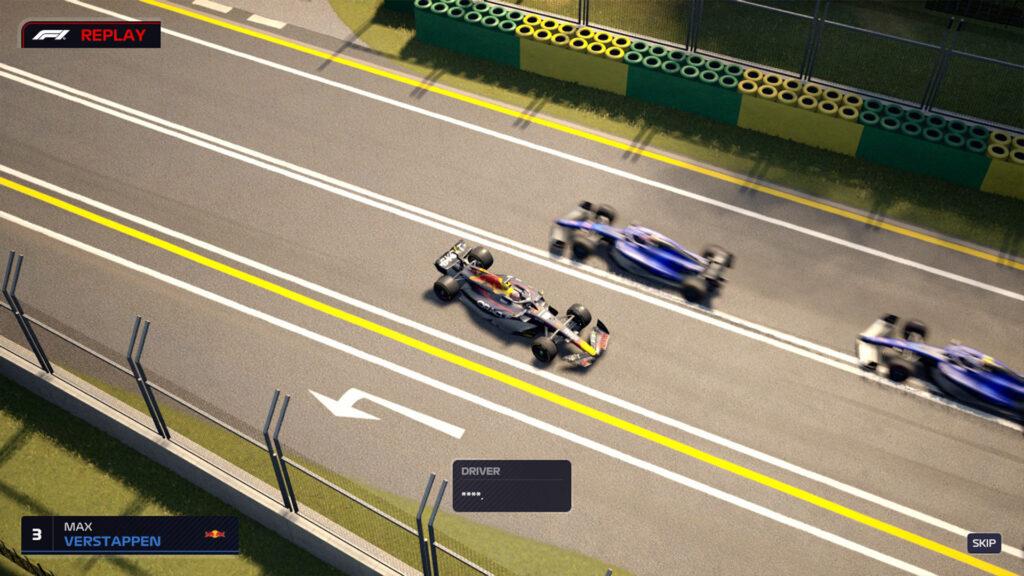
As a rule of thumb, aim to get ‘Straights’ nailed down first by balancing your front and rear wing angle settings, with help from tyre camber changes to balance oversteer. Then adjust your anti-roll bars to optimise traction, with toe-out the last change required thanks to its minimal effect on the rest of the set-up.
You can fettle your set-up by obtaining driver feedback. This occurs in five stages (to match the five aspects of car set-up), with it taking around 20 minutes of running to gather the full gamut of feedback. This means you can do two full set-up evaluations in every practice session.
4) Car parts knowledge
Put simply, whenever you introduce newly-developed car parts to your team your drivers will require a little time to get on top of them. Increase this stat by allowing your drivers more time behind the wheel. Easy.
5) Driver affinity
A new feature of F1 Manager 2023 is the affinity stat between Race Engineers and drivers. So, drivers with historical relationships with past engineers will carry a higher affinity, increasing morale and driver confidence.
Pairing drivers with compatible race engineers can therefore make it easier to renew their contracts as well as potentially improving race day results.
Affinity can also be built up between drivers and engineers over time, so don’t panic by binning a good engineer or driver simply to get short-term buffs.

6) Overtakes and fastest laps and sectors
Another way to improve confidence is to get your driver to perform personal best sectors and laps out on track (fastest overall laps are handy, too). Completing overtakes also enhances confidence, just like being overtaken does the opposite.
And the chances of performing a successful overtake are influenced by your drivers’ confidence level, meaning if you don’t pay attention to the above-noted game mechanics then your drivers will suffer in races.
Tyre temperature
There are different optimal temperatures for every compound of tyre used. It’s easy to spot whether your tyres are too cold or too hot by noting the colour of the temperature indicator. Blue equals cold tyres; red equals hot and white means your tyres are in their optimum range.
Keeping your tyres in the optimal temperature range is crucial as it helps prevent higher tyre wear and grip loss. It also prevents brake lock-ups and puncture-causing flat spots.

To increase tyre temperatures, ask your drivers to increase their pace. To lower tyre temperatures, do the opposite. Generally, hard compound tyres can withstand more aggressive driving for longer, while soft tyres need to be carefully managed.
The effects of tyre temperatures in ‘23 aren’t as severe as hoped, however, as it’s possible to push soft tyres past their optimal range and still maintain performance. They’ll wear out quicker but you can factor this into your tyre strategy.
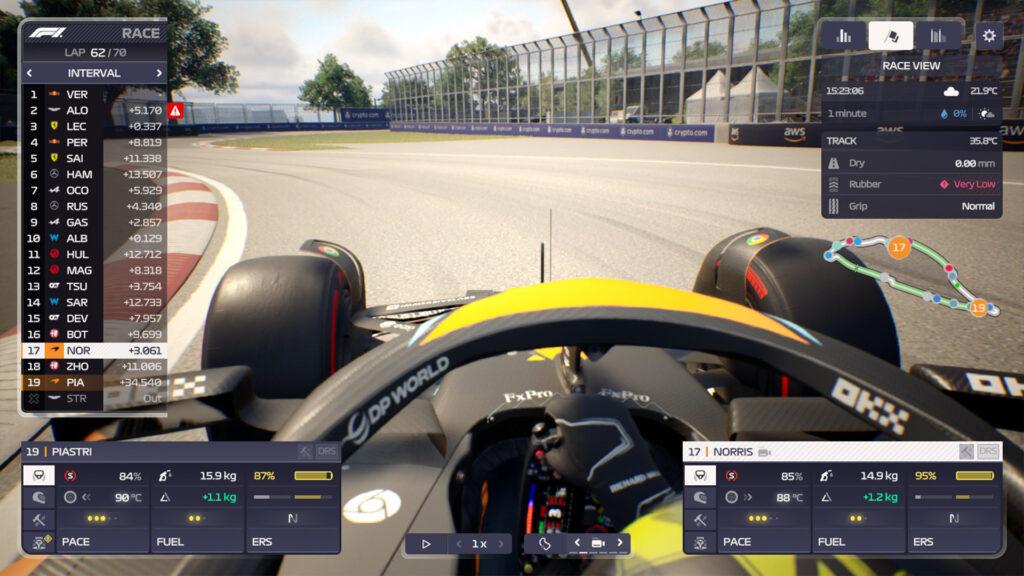
Use you scouts
Seen as a slightly superfluous addition to ‘22, scouts are a much-required feature in ‘23 thanks to it now being possible to negotiate properly with potential staff targets.
Opting for a full, 30-day scouting operation on your mark will unlock information on their salary, signing bonus preference and contract length, meaning you can potentially negotiate a successful deal in fewer attempts.
After all, too many attempts will wear out your target’s patience, and then it’s bye-bye Bono (that’s what happens when you take negotiations too close to The Edge…).
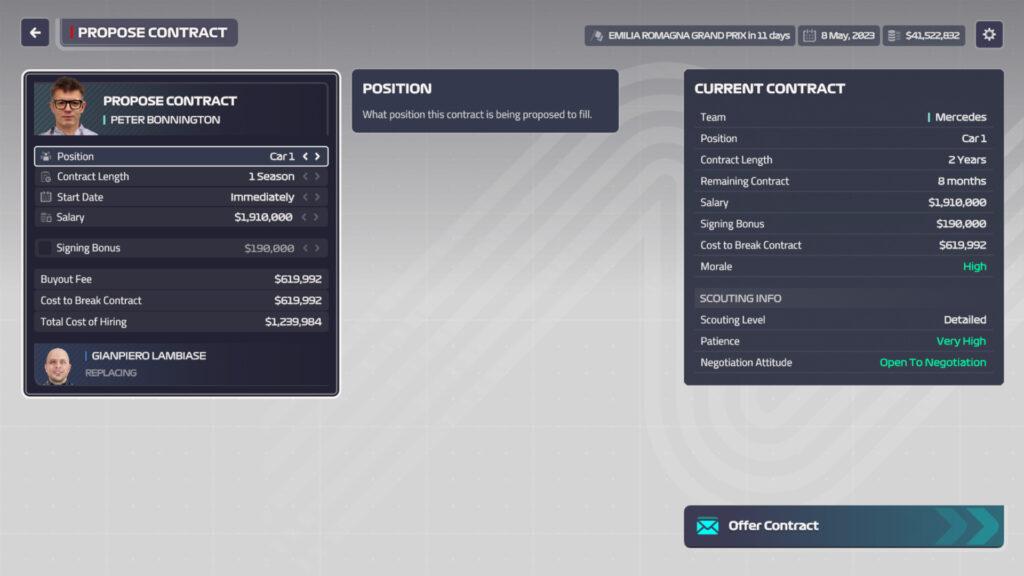
Practice tips
As well as working on track acclimatisation, set-up and car parts knowledge stats, official Practice sessions are a great opportunity to save tyres for the race and maximise your available powertrain components.
Every team in F1 receives an allocation of three engines, two ERS units and five gearboxes per season. These wear out over time and if you go over your allowance, will result in grid penalties.
You can either take the hit or minimise the wear on new parts by swapping them out for old ones during Practice sessions. Decrease the wear further by instructing your drivers to drive less aggressively and avoid nasty, gearbox-splitting kerbs too.
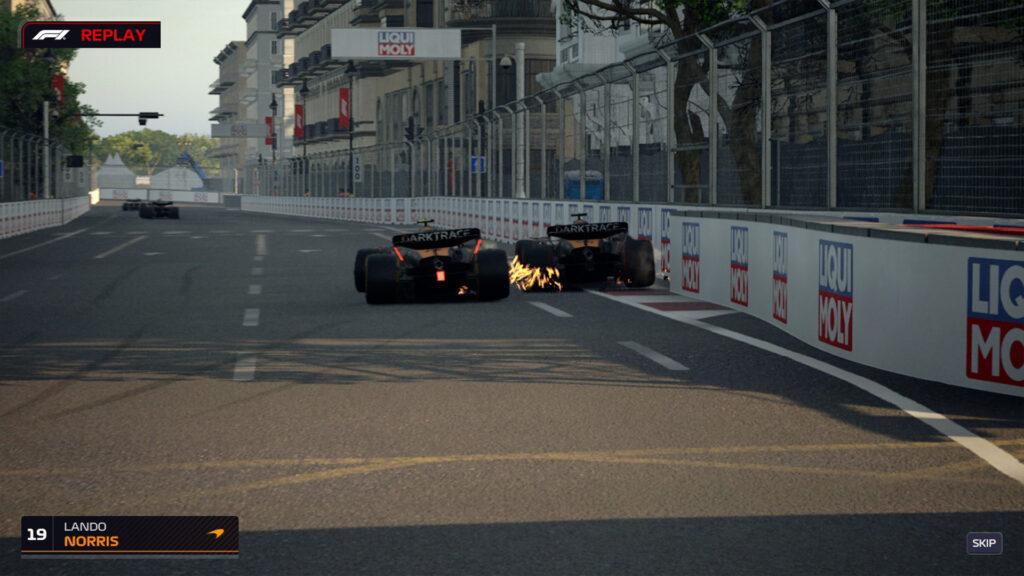
It’s a menial task to swap the parts out between Practice and Qualifying but should be worth it towards the end of the season as your opponents end up starting the Brazilian Grand Prix from somewhere in Norwich.
Another tip for Practice sessions is to not let the AI take control. Sure, it’s a time-consuming bore having to manually take charge of these, but if you leave it to the AI your drivers will end up with paltry confidence figures. And no amount of desk-banging can fix that.
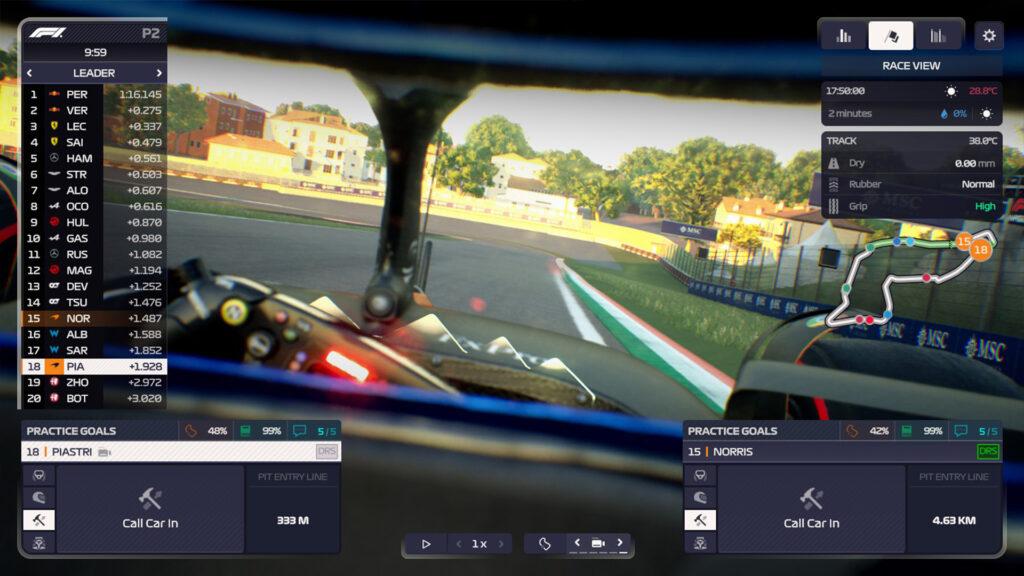
F1 Manager 2023 Race Replay tips
Race Replay is one of the best new features in F1 Manager 2023. Race Replays contain two separate types of scenario: Race Moments and Starting Grids.
Starting Grids scenarios play out like a normal race minus all the day-to-day F1 management gubbins, however, Race Moments are a snapshot of a crucial point in a race.
Race Moments see you dropped in at the turning point of a race, so whatever you decide to do, do it quickly! Take ‘Fernando’s Gamble’ as an example. You’re parachuted in as the rain starts to fall in the Monaco Grand Prix, so now’s the time to act fast and bring Fernando Alonso in for intermediates.
Instruct him to push like crazy from the get-go to ensure he emerges in the lead after Max Verstappen also switches to wet weather rubber. If you don’t commit heavily to the pit stop and aggressive driving straight away it’s scenario over and you’ll need to restart.
Likewise with the Exclusive Scenario, ‘Tactical Masterclass’. As soon as it starts, sacrifice George Russell and let Lewis Hamilton overtake. Leave Russell out long enough on fading tyres to slow down the chasing Red Bulls, ensuring Hamilton has a big enough gap ahead to hold on for the win.
Whichever scenario you try, make sure to act as decisively and aggressively as possible – there’s no point looking after the car or worrying about crashes; you’ve only got one shot at a result. And if you don’t succeed, simply restart and try again until you do.
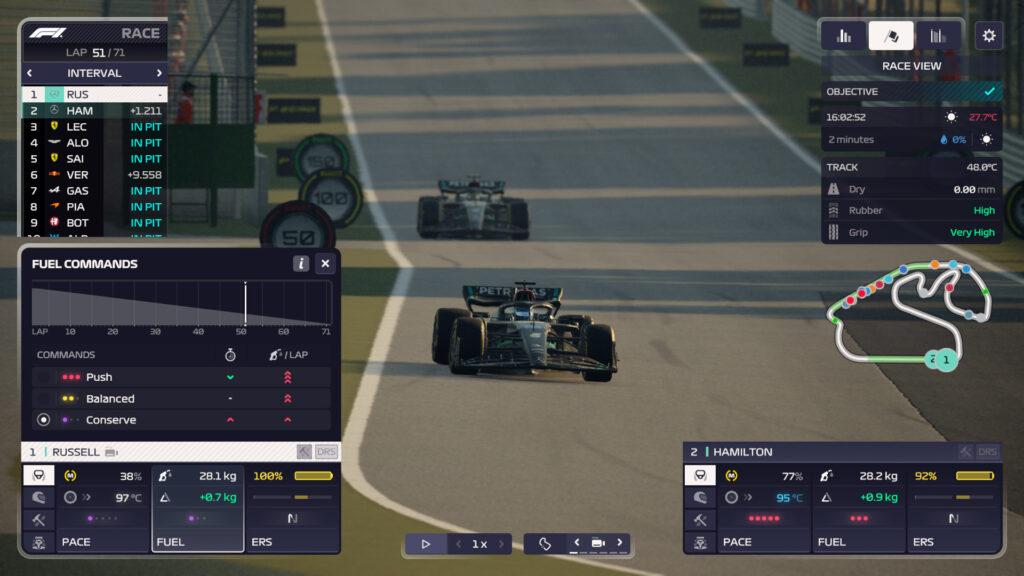
Race tyre strategy
At the moment, soft tyres appear to be the compound of choice for races; easily hanging on in terms of endurance and performance. So, try to include at least one or two stints on softs in every race.
Running in clear air is also much more advantageous in ‘23 thanks to the way cars duel side-by-side for laps at a time, holding each other up. Sometimes it’s better to get out of traffic to focus on your own pace to perform an undercut pitstop strategy.
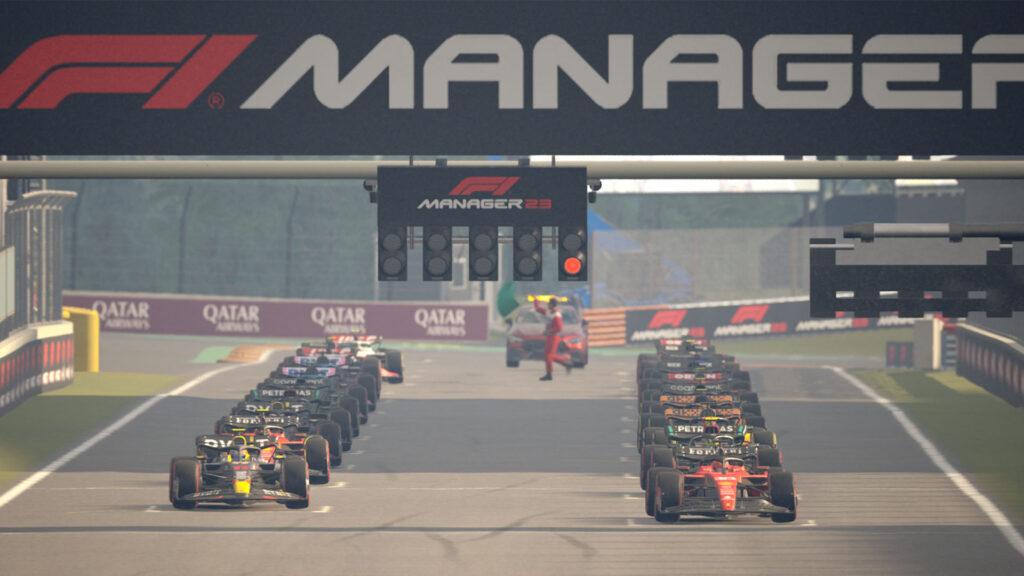
Switch on ERS Battle Assist
Manually changing your ERS strategy was a bit of nuisance in ‘22, so for ‘23 Frontier Developments has added an ERS Battle Assist helping hand.
This allows the game to automatically control the level of ERS use on your cars depending on their situation. So in an overtaking duel the AI will use more of your car’s battery to attack and defend, all without your intervention.
It’s a handy tool, but sometimes manual intervention with the overtake button is what’s needed to get the job done.





Chat with the Community
Sign Up To CommentIt's completely Free